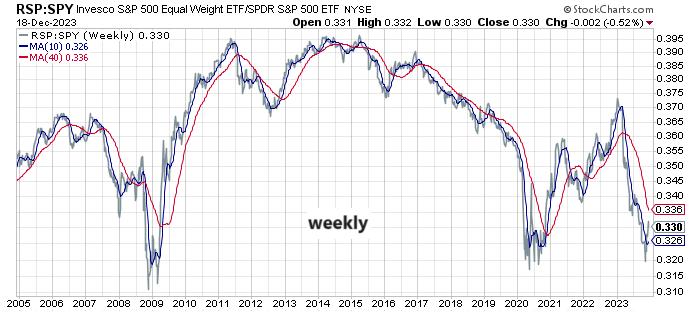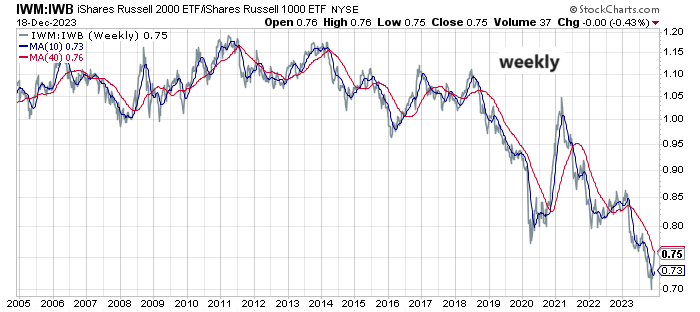Nvidia among investors in xAI’s $20 bln capital raise- Bloomberg
The S&P 500 Index’s rise in recent weeks puts it within shouting distance of its record high, set in January 2022. Yet some analysts warn that the narrow leadership of Big Tech stocks leaves the market vulnerable.
Consider year-to-date returns for Technology Select Sector ETF (NYSE:XLK) vs. S&P 500 ETF (NYSE:SPY), a proxy for the broad market. XLK has surged more than 55% in 2023 through yesterday’s close (Dec. 18), more than double SPY’s gain.

More recently, however, there are signs that market breadth is improving, which some analysts say points to higher odds for a healthier, sustainable rally.
Morgan Stanley chief investment officer Mike Wilson reports that 78% of S&P 500 stocks traded above their 200-day moving average last week, a level that returns to the highest mark for 2023.
“Over the past month, we’ve experienced arguably the best stretch of breadth improvement in 2023,” he writes in a research note this week.
The widening breadth is also reflected in the ratio of an Invesco S&P 500® Equal Weight ETF (NYSE:RSP) vs. its market-weighted counterpart (SPY).
To be fair, the bounce in this ratio (stronger performance for stocks generally vs. the largest firms) follows a long stretch of falling, and so these are still early days for assuming that a new regime of wider breadth is unfolding via this metric. 
Meanwhile, an analyst at Zacks last week noted:
“The market’s recent breadth expansion is bullish as sectors like financials, health care, and industrials rally strongly from oversold levels.
More stocks have reestablished uptrends and a healthy percentage are hitting 52-week highs.”
He adds that “small-caps are beginning to show signs of outperformance” and “the improvement speaks to increased odds that this rally will be sustainable.”
The recent spike in the ratio of a small-cap ETF (IWM) vs. its large-cap brethren (IWB) looks encouraging. Reviewing a long-term chart of this relationship, however, still leaves room for debate about whether the latest upturn is noise or signal.

Ed Yardeni of Yardeni Research predicts the rally has legs, and improving breadth is a factor.
“Our view has been that the bull market will broaden, which seems to be happening now because investors are more confident that the Fed is done raising interest rates and might start lowering them next year,” he wrote this week.
The question is how much of a good thing is too much? More precisely, how much of rally lives at the mercy of expectations for rate cuts?
Perhaps more than generally recognized, which implies that the market strength is still overly dependent on the twists and turns of Fed policy in the weeks ahead.
A new Bank of America poll finds that rate cut expectations are driving renewed demand for stocks.
That’s certainly good news for the bulls in the short term. Deciding if there’s something more than a temporary sugar high brewing for the longer outlook remains a work in progress.
